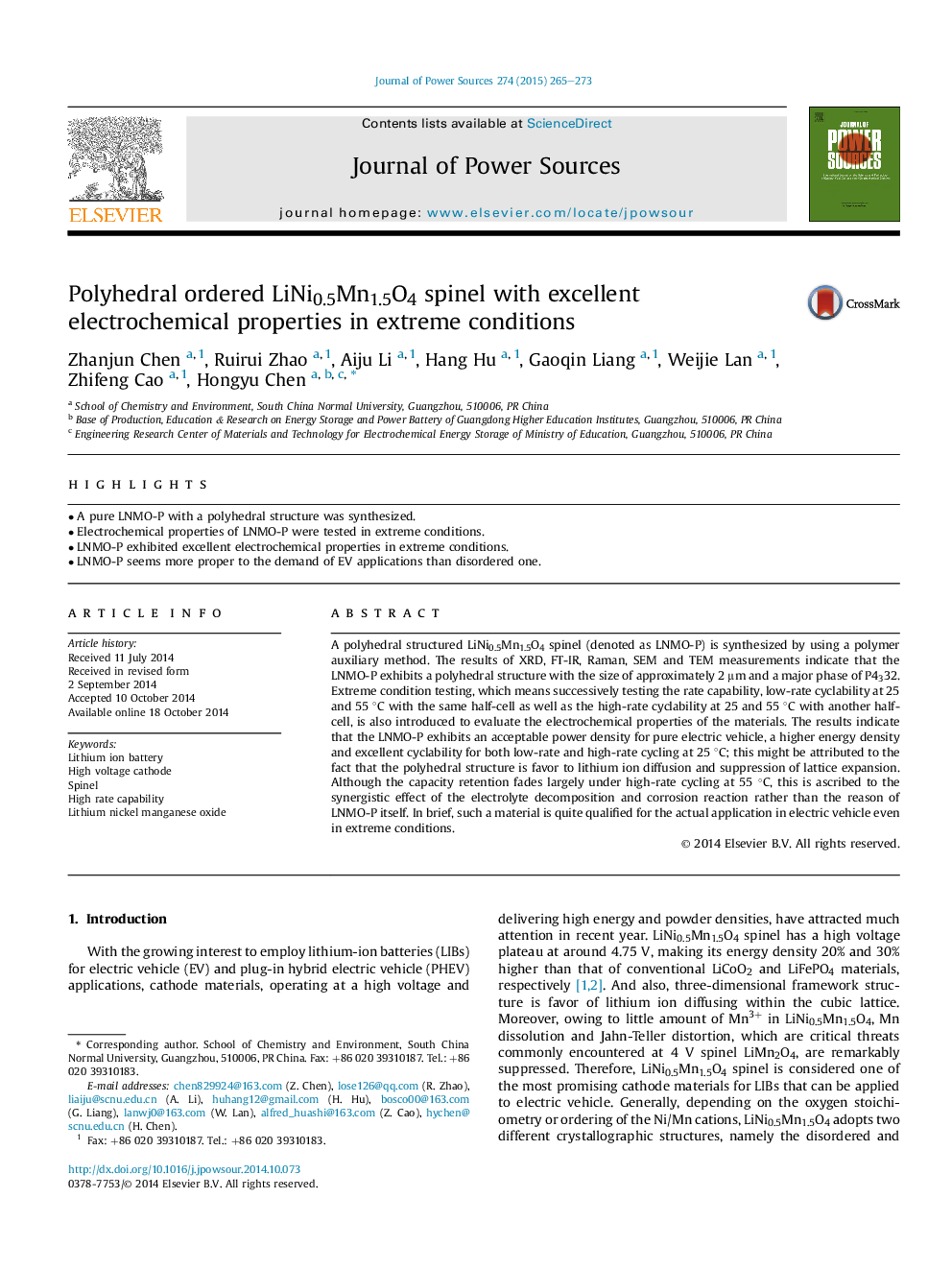| Article ID | Journal | Published Year | Pages | File Type |
|---|---|---|---|---|
| 7734844 | Journal of Power Sources | 2015 | 9 Pages |
Abstract
A polyhedral structured LiNi0.5Mn1.5O4 spinel (denoted as LNMO-P) is synthesized by using a polymer auxiliary method. The results of XRD, FT-IR, Raman, SEM and TEM measurements indicate that the LNMO-P exhibits a polyhedral structure with the size of approximately 2 μm and a major phase of P4332. Extreme condition testing, which means successively testing the rate capability, low-rate cyclability at 25 and 55 °C with the same half-cell as well as the high-rate cyclability at 25 and 55 °C with another half-cell, is also introduced to evaluate the electrochemical properties of the materials. The results indicate that the LNMO-P exhibits an acceptable power density for pure electric vehicle, a higher energy density and excellent cyclability for both low-rate and high-rate cycling at 25 °C; this might be attributed to the fact that the polyhedral structure is favor to lithium ion diffusion and suppression of lattice expansion. Although the capacity retention fades largely under high-rate cycling at 55 °C, this is ascribed to the synergistic effect of the electrolyte decomposition and corrosion reaction rather than the reason of LNMO-P itself. In brief, such a material is quite qualified for the actual application in electric vehicle even in extreme conditions.
Keywords
Related Topics
Physical Sciences and Engineering
Chemistry
Electrochemistry
Authors
Zhanjun Chen, Ruirui Zhao, Aiju Li, Hang Hu, Gaoqin Liang, Weijie Lan, Zhifeng Cao, Hongyu Chen,
